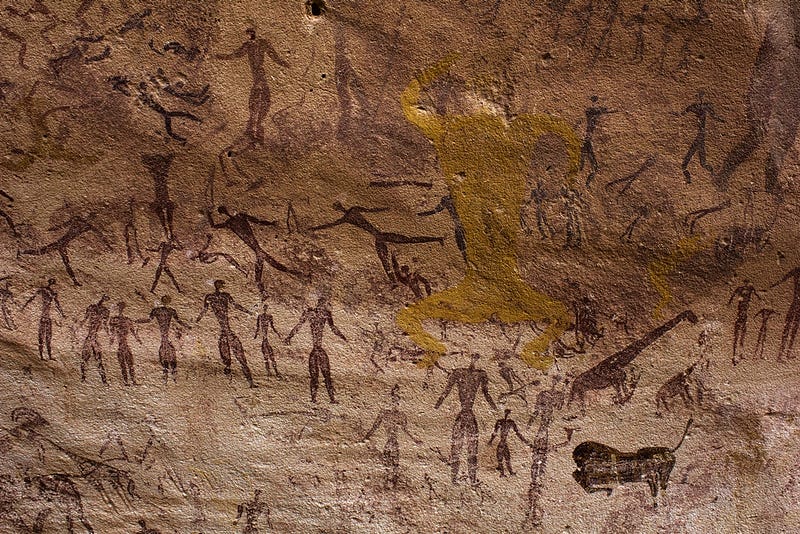The Self: Navigating Modernity's Spiritual Crisis
Written on
Chapter 1: The Nature of Religious Language
Religious terminology often faces misinterpretation, especially in the context of contemporary critiques or simplistic portrayals. Contrary to the rigid interpretations by some factions of American Christianity, these terms should be seen as symbolic rather than literal. Many religious concepts are fundamentally unfalsifiable, raising questions that empirical evidence cannot adequately address. Consider the debates surrounding the Trinity, the nature of the Atman, or the duality of Christ's nature—these inquiries transcend mere factual analysis and instead offer profound insights into our self-perception and understanding of reality.
In today's society, many dismiss these ideas as outdated. However, the real concern lies in the evolution of language itself. For nearly a century, the trend has been to reduce religion to straightforward factual claims, overlooking the rich symbolism embedded within. While it's true that religion contains historical truths, the reductionist view serves the interests of those keen to undermine its significance.
Science offers us a framework for understanding reality, yet it falls short of addressing deeper existential questions. While scientific inquiry provides descriptions and causal relationships, it does not reveal the essence of our being. We need a conceptual model to navigate existence, which, while not entirely arbitrary, operates differently from scientific assertions.
Religious language functions as a bridge between our conscious and unconscious minds, allowing us to articulate our experiences. Humans possess a unique duality: we are both the observer and the observed, the subjectivity of our selves reflected back at us. Thus, our perception of self is essential for interpreting reality and guiding our actions.
Culture serves as a repository of self-referential expressions, manifesting in various forms such as art, literature, and now digital media. These narratives facilitate our exploration of identity, shaping our self-image and aspirations. Historically, humanity has engaged with the cosmos through a spiritual lens, with individualism emerging from a more animistic worldview.
The discourse surrounding the self is deeply intertwined with theological exploration. This progression from animism to polytheism and ultimately to monotheism reflects the journey of self-awareness. Yet, modernity introduces a complex question: does the evolution from monotheism lead to individualism, and eventually to skepticism or atheism? The Protestant Reformation marked a shift toward personal authority, culminating in a landscape where individual interpretation prevails.
This evolution poses challenges. Rejecting transcendent concepts of self confines us to a literal interpretation of existence, undermining the role of the unconscious. Additionally, the elusive nature of self and reality necessitates a symbolic language for meaningful existence. Most critically, if our self-concepts fail to foster connections beyond individual boundaries, societal fragmentation becomes inevitable.
Religion offers pathways to address these existential questions, fostering a sense of unity and connection with others. Individualism alone cannot yield a coherent understanding of salvation; it requires the presence of an "other" to give meaning and value to our existence. The self transforms into a conduit linking the transient with the eternal.
Without the richness of religious language, our symbols risk losing significance. The resurgence of literalist ideologies and various cultural movements signals that the quest for spiritual connection remains vital. Ultimately, we yearn for a deeper understanding of ourselves that transcends mere individualism, as encapsulated in Augustine's profound assertion: God is closer to us than we are to our innermost selves.
Section 1.1: The Role of Symbols in Religion
Symbols in religious contexts serve to convey complex truths and foster connections. They act as conduits for understanding and embodying deeper meanings that transcend mere words.
Subsection 1.1.1: The Power of Metaphor

Section 1.2: The Unconscious and the Self
The interplay between the unconscious and conscious mind shapes our understanding of self, revealing the intricate layers of human experience.
Chapter 2: Exploring Modern Spirituality
In this digital age, our spiritual inquiries often collide with contemporary challenges. The quest for meaning is as relevant as ever.
Explore the journey of self-discovery in the context of modernity's complexities, as discussed in "Metastatic Modernity #6: Accidental Tourists."
Join Eshwar Segobind in a deep dive into the processes of deconstructing self-illusion and the implications for spiritual awakening.